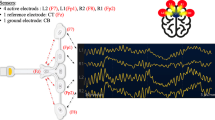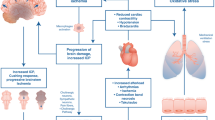Abstract
Accurate assessment of the perfusion of free-tissue transfers has always been a challenge for surgeons undertaking microvascular reconstructive procedures. Microvascular free-tissue transfer today has a high success rate, which is partly due to the monitoring of flap circulation post-operatively. Recent advances in technology and improvements in surgical technique have led to reported success rates of between 95% and 98%. The aim of post-operative surveillance is the early recognition of flap compromise to improve chances of flap salvage and lower morbidity and mortality rates. There is extensive literature available on post-operative monitoring, and, although many techniques to assess flap perfusion have been described, a standard, reliable, universally accepted method, other than bedside clinical observation by the medical and nursing staff, remains elusive. This review outlines the current clinical and experimental flap monitoring methods available.


Similar content being viewed by others
References
Aukland K, Bower BF, Berliner RW (1964) Measurement of local blood flow with hydrogen gas. Cir Res 14:164–187
Aygit AC, Sarikaya A (1999) Technetium 99m sestamibi scintigraphy for noninvasive assessment of muscle flap viability. Ann Plast Surg 43:338–340
Chazan BI, Balodimos MC, Koncz L (1971) Untoward effects of fluorescein retinal angiography in diabetic patients. Ann Ophthalmol 3:42 passim
Conway H (1952) Clinical tests for the evaluation of circulation in tubed pedicles and flaps. Ann Surg 135:52–59
Creech B, Miller S (1975) Evaluation of circulation in skin flaps. In: Grabb WC Myers MB (eds) Skin flaps. Little, Brown, Boston
Dagum AB, Dowd AJ (1995) Simple monitoring technique for muscle flaps. Microsurgery 16:728–729
Desprez JD, Kiehn CL (1962) Effects of local hypothermia on pedicle flap tissue. II. Hemodynamic changes. Plast Reconstr Surg 29:539–550
Dingwall JA, Lord JW (1943) The fluorescein test in the management of tubed (pedicle) flaps. Bull Johns Hopkins Hosp 73:129
Eddy HC, Taylor HP (1931) Experiences with the Dermatherm in relation to peripheral vascular disease. Am Heart J 6:683
Edwards EA, Duntley SQ (1939) The pigments and colour of human living skin. Am J Anat 65:1
Elias DL, Nelson RC, Herbst MD, Zubowicz VN (1987) Magnetic resonance imaging for detection of arterial and venous occlusion in canine muscle flaps and bowel segments. Ann Surg 206:624–627
Eren S, Rubben A, Krein R, Larkin G, Hettich R (1995) Assessment of microcirculation of an axial skin flap using indocyanine green fluorescence angiography. Plast Reconstr Surg 96:1636–1649
Glogovac SV, Bitz DM, Whiteside LA (1982) Hydrogen washout technique in monitoring vascular status after replantation surgery. J Hand Surg Am 7:601–605
Graham BH, Gordon L, Alpert BS, Walton R, Buncke HJ, Leitner DW (1985) Serial quantitative skin surface fluorescence: a new method for postoperative monitoring of vascular perfusion in revascularized digits. J Hand Surg Am 10:226–230
Harrison DH, Girling M, Mott G (1981) Experience in monitoring the circulation in free-flap transfers. Plast Reconstr Surg 68:543–555
Hellner D, Schmeize R (1993) Laser Doppler monitoring of free microvascular flaps in maxillofacial surgery. J Craniomaxillofac Surg 21:25–29
Hirigoyen MB, Blackwell KE, Zhang WX, Silver L, Weinberg H, Urken ML (1997) Continuous tissue oxygen tension measurement as a monitor of free-flap viability. Plast Reconstr Surg 99:763–773
Issing WJ, Naumann C (1996) Evaluation of pedicled skin flap viability by pH, temperature and fluorescein: an experimental study. J Craniomaxillofac Surg 24:305–309
Jones BM (1984) Monitors for the cutaneous microcirculation. Plast Reconstr Surg 73:843–850
Jones BM, Mayou BJ (1982) The laser Doppler flowmeter for microvascular monitoring: a preliminary report. Br J Plast Surg 35 147–149
Kaufman T, Granick MS, Hurwitz DJ, Klain M (1987) Is experimental muscle flap temperature a reliable indicator of its viability? Ann Plast Surg 19:34–41
Kety SS (1951) The theory and application of the exchange of inert gas at the lungs and tissues. Pharmacol Rev 3:1–41
Khouri RK (1992) Avoiding free flap failure. Clin Plast Surg 19:773–781
Khouri RK, Shaw WW (1992) Monitoring of free flaps with surface-temperature recordings: is it reliable? Plast Reconstr Surg 89:495–499; discussion 500–502
Kind GM, Buntic RF, Buncke GM, Cooper TM, Siko PP, Buncke HJ Jr (1998) The effect of an implantable Doppler probe on the salvage of microvascular tissue transplants. Plast Reconstr Surg 101:1268–1273; discussion 1274–1275.
Kreidstein ML, Levine RH, Knowlton RJ, Pang CY (1995) Serial fluorometric assessments of skin perfusion in isolated perfused human skin flaps. Br J Plast Surg 48:288–293
Kroll SS, Schusterman MA, Reece GP, Miller MJ, Evans GR, Robb GL, Baldwin BJ (1996) Choice of flap and incidence of free flap success. Plast Reconstr Surg 98:459–463
Mahoney JL, Lista FR (1988) Variations in flap blood flow and tissue PO2: a new technique for monitoring flap viability. Ann Plast Surg 20:43–47
May JW Jr, Lukash FN, Gallico GG 3rd, Stirrat CR (1983) Removable thermocouple probe microvascular patency monitor—an experimental and clinical study. Plast Reconstr Surg 72:366
McCraw JB, Myers B, Shanklin KD (1977) The value of fluorescein in predicting the viability of arterialized flaps. Plast Reconstr Surg 60:710–719
Morykwas MJ, Hills H, Argenta LC (1991) The safety of intravenous fluorescein administration. Ann Plast Surg 26:551–553
Raskin DJ, Erk Y, Spira M, Melissinos EG (1983) Tissue pH monitoring in microsurgery: a preliminary evaluation of continuous tissue pH monitoring as an indicator of perfusion disturbances in microvascular free flaps. Ann Plast Surg 11:331–339.
Silverman DG, LaRossa DD, Barlow CH, Bering TG, Popky LM, Smith TC (1980) Quantification of tissue fluorescein delivery and prediction of flap viability with the fiberoptic dermofluorometer. Plast Reconstr Surg 66:545–553
Sloan GM, Reinissch JF (1985) Flap physiology and the prediction of flap viability. Hand Clin 1:609–619
Stack BC Jr, Futran ND, Shohet MJ, Scharf JE (1998) Spectral analysis of photoplethysmograms from radial forearm free flaps. Laryngoscope 108:1329–1333
Stein MR, Parker CW (1971) Reactions following intravenous fluorescein. Am J Ophthalmol 72:861
Svensson H, Holmberg J, Svedman P (1992) Interpreting laser Doppler recordings from free flaps. Scand J Plast Reconstr Hand Surg 27:81–87
Swartz WM, Izquierdo R, Miller MJ (1994) Implantable venous Doppler microvascular monitoring: laboratory investigation and clinical results. Plast Reconstr Surg 93:152–163
Thorniley MS, Sinclair JS, Barnett NJ, Shurey CB, Green CJ (1998) The use of near-infrared spectroscopy for assessing flap viability during reconstructive surgery. Br J Plast Surg 51:218–226
Tsuchida Y (1979) Rate of skin blood flow in various regions of the body. Plast Reconstr Surg 64:505
Tsuchida Y (1990) Age-related changes in skin blood flow at four anatomic sites of the body in males studied by xenon-133. Plast Reconstr Surg 85:556–561
Udesen A, Lontoft E, Kristensen SR (2000) Monitoring of free TRAM flaps with microdialysis J Reconstr Microsurg 16:101–106
Utoh J, Kunitomo R, Sakaguchi H, Hagiwara S, Uemura S, Uemura K, Muranaka T, Nishimura K, Kitamura N (2000) Indocyanine green (JCG) clearance as a monitor to evaluate right heart function. Kyobu Geka 53:212–214
Whitaker IS, Oliver DW, Ganchi PA (2003) Postoperative monitoring of microvascular tissue transfers: current practice in the United Kingdom and Ireland. Plast Reconstr Surg 111:2118–2119
Wolff KD, Marks C, Uekermann B, Specht M, Frank KH (1996) Monitoring of flaps by measurement of intracapillary haemoglobin oxygenation with EMPHO II: experimental and clinical study. Br J Oral Maxillofac Surg 34:524–529
Yuen JC, Feng Z (1998) Reduced cost of extremity free flap monitoring. Ann Plast Surg 41:36–40
Yuen JC, Feng Z (2000) Monitoring free flaps using the laser Doppler flowmeter: five-year experience. Plast Reconstr Surg 105:55–61
Author information
Authors and Affiliations
Corresponding author
Rights and permissions
About this article
Cite this article
Whitaker, I.S., Karoo, R.O.S., Oliver, D.W. et al. Current techniques in the post-operative monitoring of microvascular free-tissue transfers. Eur J Plast Surg 27, 315–321 (2005). https://doi.org/10.1007/s00238-004-0680-4
Received:
Accepted:
Published:
Issue Date:
DOI: https://doi.org/10.1007/s00238-004-0680-4




